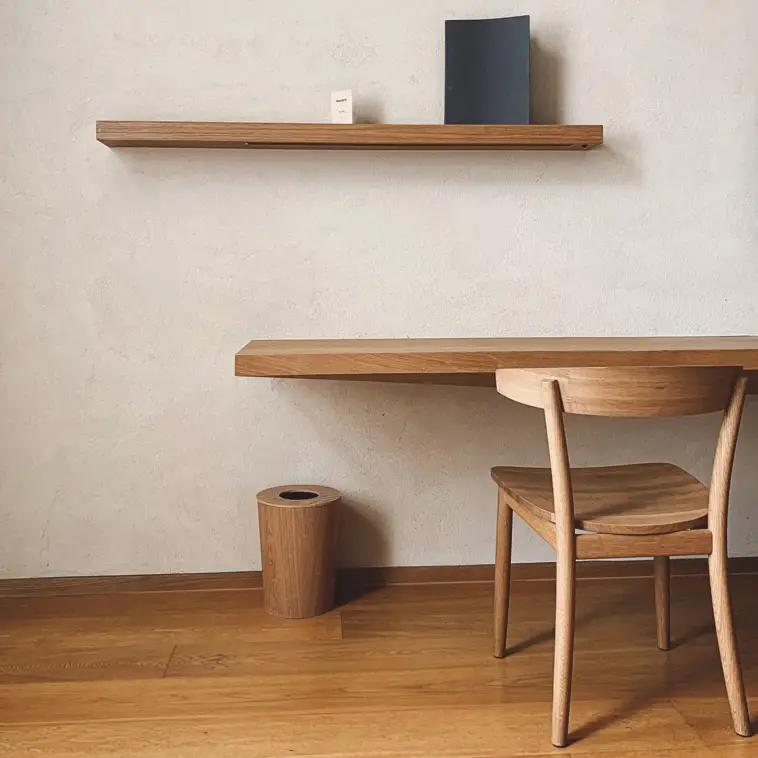Woodworking is as much an art as it is a skill. The gentle caress of sandpaper, the sharp bite of a chisel, the serene hum of a bandsaw—each step in a woodworking project is a lesson in patience and precision. But for all its beauty, the world of woodworking can be daunting for newcomers. The key to a fulfilling and successful wood DIY project isn’t just your passion but thorough preparation. Let’s dive deep into what it takes.
1) Pre-Project Preparation
Blueprinting your success.
A. Understand the Scope: Is it a decorative piece or functional furniture? Knowing the end goal helps in estimating time, effort, and materials.
B. Sketch Your Vision: A detailed drawing, even if rudimentary, aids in visualizing the end product, estimating material quantities, and spotting potential hurdles.
C. Budgeting: Create a detailed list of materials and tools you’ll need. Factor in a small contingency for those ‘just in case’ moments.
2) Choosing the Right Wood
Your canvas matters as much as your craftsmanship.
A. Types of Wood: Softwoods like pine are great for indoor projects, while hardwoods like oak are durable for outdoor furniture.
B. Environmental Considerations: If it’s an outdoor piece, ensure the wood is resilient to humidity, rain, and temperature fluctuations.
C. Quality Check: Be vigilant for imperfections. Knots can be aesthetic, but warping or too much moisture can ruin your hard work.
3) Essential Tools for Every Woodworker
Equip yourself with the best.
A. Power Play: Quality power tools like circular saws or jigsaws can elevate your project, giving it a refined touch.
B. Hand Tool Heroes: Sometimes, the best touch is the human touch. Hand tools like planes and chisels bring out the craftsmanship in your project.
C. Safety and Precision: Always have your safety gear on.
4) Fasteners and Adhesives
It’s all about holding things together.
A. Screw Wisdom: Understanding the differences, such as when to use stainless steel wood screws for a strong grip or brass screws for a decorative touch, can make or break your project.
B. Beyond Screws: Sometimes nails, dowels, or even brackets might be the ideal choice. Understand their strengths and limitations. Choose stainless steel bolts when you need durability and great resistance to outside conditions.
C. Stick with It: Different projects require different adhesives. Whether it’s PVA for bonding or epoxy for a heavy-duty hold, choose wisely.
5) Prepping and Cleaning Your Wood
Every masterpiece starts with a clean canvas.
A. Smooth Moves: Sanding not only preps the wood but also opens its pores for staining. Remember, always sand in the direction of the grain.
B. Reclaimed or Fresh: Using reclaimed wood? Ensure all old nails and screws are removed, and the wood is free from mold.
C. Priming for Perfection: Using the right primer can enhance the paint’s color and longevity.
6) Techniques for Joining and Assembly
Strong joints make sturdy pieces.
A. Traditional Joinery: Techniques like dovetails or lap joints might take time to master but offer unmatched strength and aesthetics.
B. Clamping Wisdom: Use clamps to hold your pieces together, especially while gluing, to ensure they dry perfectly aligned.
C. Accuracy Matters: Ensure all your joints are square. A carpenter’s square is an indispensable tool in these situations.
7) Finishing Touches
Protect, beautify, and showcase.
A. Stain or Paint: While staining enhances the wood’s natural beauty, painting can infuse your project with vibrant colors. Choose what complements your project.
B. Sealing the Deal: Sealants protect your project from moisture and UV rays, ensuring longevity.
C. Adding Character: Techniques like distressing or using a wood burner can add a unique touch to your creation.
8) Safety First!
Better safe than sorry.
A. Air It Out: Always work in well-ventilated spaces. Fumes from paints and solvents can be hazardous.
B. Respect the Tools: Keep blades sharp, and tools maintained. A well-maintained tool is safer and gives better results.
C. Kid-Friendly Workspace: Ensure that your workspace is off-limits to children, especially when tools are plugged in, or chemicals are within reach.
9) Maintenance and Care for Your Wood Projects
Longevity comes from love and care.
A. Regular Checkups: Moisture and pests are wood’s enemies. Regular checks can prevent damage.
B. Dust and Clean: Dust can dull the shine over time. Regular dusting and occasional cleaning with a wood-safe cleaner can keep your piece looking new.
C. Refinishing: Whether it’s a new layer of varnish or paint, refinishing can breathe new life into your project, making it resilient and revitalized.
Final Thoughts
Crafting a wooden masterpiece is a journey of passion, patience, and precision. But the journey doesn’t end once the final nail is hammered in or the last brush of varnish is applied. Like any cherished possession, your wood projects deserve ongoing care to ensure they stand the test of time.
By embedding a few simple maintenance habits into your routine, you can enjoy the beauty and functionality of your creations for years, if not generations, to come. After all, the love you pour into crafting should be mirrored in the love you show in preserving.




